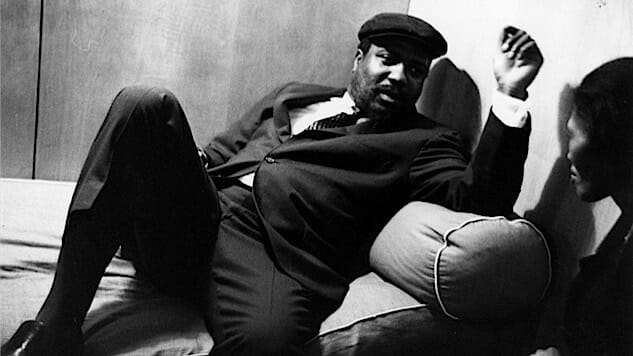Celebrating 100 Years of Thelonious Monk: Listen to This Rare Recording From 1959
Monk's set at the 1959 Newport Jazz Festival is among his greatest moments.

Today marks the centennial of the birth of pianist Thelonious Monk (1917-82), one of the most idiosyncratic stylists and influential composers in the annals of jazz. His staggering output includes several tunes that are regarded as foundations for the music that followed—”’Round Midnight,” “Blue Monk,” “Straight No Chaser,” “Epistrophy,” “Pannonica” and “Bemsha Swing,” to name just a few. With his inimitable improvisational skills and distinctive hats and sunglasses, Monk still cuts one of the most imposing figures in jazz, even 35 years after his death. Despite writing only about 70 pieces of music in his lifetime, he remains one of the genre’s most recorded composers.
Born on Oct. 10, 1917, in Rocky Mount, N.C., Monk grew up on West 63rd Street in New York City—the spot where Lincoln Center for the Performing Arts now resides. He started playing piano when he was around 5, and later became inspired by the Harlem stride pianists James P. Johnson, Willie “The Lion” Smith and Lucky Roberts, as well as by more harmonically advanced pianists Duke Ellington and Teddy Wilson. He made his recording debut as a leader in 1947, and quickly became one of the most important artists in the world.
To celebrate Monk’s 100th birthday, we’ve dug into the Paste Vault, which includes the archives of the Newport Jazz and Folk festivals, and emerged with his breathtaking performance at the 1959 Newport Jazz Festival. Monk appeared at George Wein’s festival a dozen times over the years before dropping off the jazz scene in the mid 1970s and entering into seclusion.
For this show, Monk was accompanied by his longtime tenor saxophonist, Charlie Rouse, and the rarely recorded rhythm tandem of bassist Sam Jones and drummer Art Taylor. Together, the trio swung sympathetically and brilliantly on Monk staples like “In Walked Bud” and “Well You Needn’t,” along with a rousing “Rhythm-a-ning” and an uncommonly sensitive “Crepuscule with Nellie.” This stellar performance came just four months after Monk’s celebrated Town Hall concert in New York, which featured ambitious tentet renditions of his music arranged by Hall Overton.
-

-

-

-

-

-

-

-

-

-

-

-

-

-

-

-

-

-

-

-

-

-

-

-

-

-

-

-

-

-

-

-

-

-

-

-

-

-

-

-








































